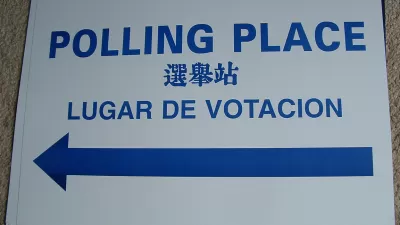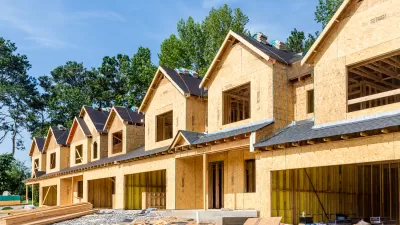Urban densities tend to encourage more liberal, tolerant values. Living among diverse neighbors can reduce fear and resentment, as everyday interactions break down stereotypes and misconceptions of ‘the other.’

Neeraj Bhatia, founder of The Open Workshop and assistant professor at the California College of the Arts, introduces an article titled "Environment as Politics":
One lesson of the U.S. presidential election is that we should forget about red and blue states, North and South, coastal coffeeshops and heartland diners. The geographic divide in American politics is closer to home. If you want to predict how someone will vote, ask, How near are your neighbors?
In the recent U.S. election, 49 of the 50 highest density counties voted for Hillary Clinton, and 48 of the 50 lowest density counties chose Donald Trump (nearly the same split as for Barack Obama and Mitt Romney four years earlier).
There are reasons for this that go beyond identity politics. Urban density has social and economic advantages that make cities attractive to liberals and that also condition liberal values over time. Living among diverse neighbors can reduce fear and resentment, as everyday interactions break down stereotypes and misconceptions of ‘the other.’ (Which is not to ignore that cities have their own problems with racial and economic segregation.
FULL STORY: Environment as Politics. New drawings of the relation between residential density and voting behavior.

Pennsylvania Mall Conversion Bill Passes House
If passed, the bill would promote the adaptive reuse of defunct commercial buildings.

Planning for Accessibility: Proximity is More Important than Mobility
Accessibility-based planning minimizes the distance that people must travel to reach desired services and activities. Measured this way, increased density can provide more total benefits than increased speeds.

Fair Housing Cannot Take a Back Seat to ‘Build, Baby, Build’
If we overlook fair housing principles in the plan to build US housing back better, we risk ending up right back where we started.

LA Metro Board Approves New 710 Freeway Plan
The newest plan for the 710 corridor claims it will not displace any residents.

Austin’s Proposed EV Charging Rules Regulate Station Locations, Size
City planners say the new rules would ensure an efficient distribution of charging infrastructure across the city and prevent an overconcentration in residential areas.

Making California State Parks More Climate-Resilient
A recently released report offers recommendations for keeping state parks healthy and robust, including acquiring additional land for conservation and recreation.
City of Costa Mesa
Licking County
Barrett Planning Group LLC
HUD's Office of Policy Development and Research
Mpact Transit + Community
HUD's Office of Policy Development and Research
Tufts University, Department of Urban and Environmental Policy & Planning
City of Universal City TX
ULI Northwest Arkansas
Urban Design for Planners 1: Software Tools
This six-course series explores essential urban design concepts using open source software and equips planners with the tools they need to participate fully in the urban design process.
Planning for Universal Design
Learn the tools for implementing Universal Design in planning regulations.

























